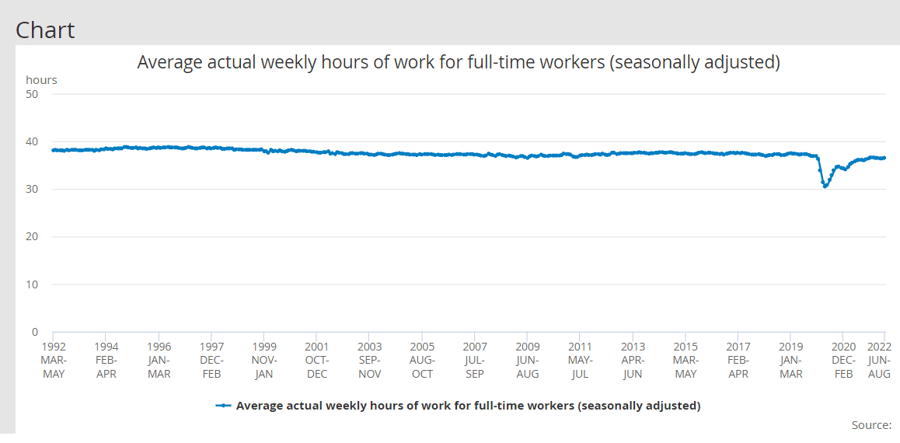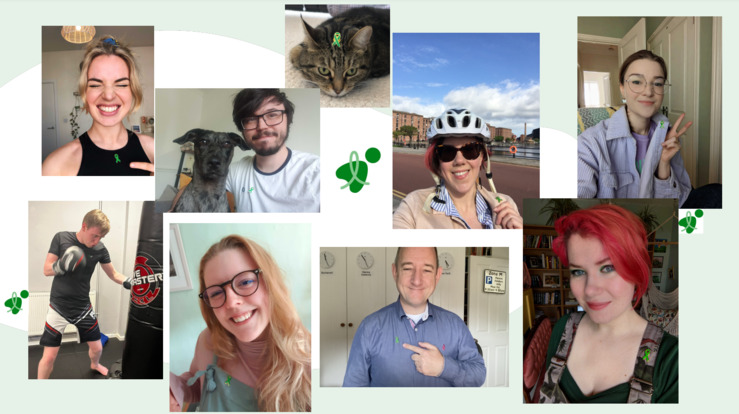Businesses need to pay attention to employee mental health and wellbeing. Especially remote working organisations.
According to the WHO, the fallout from COVID-19 has been a 25 percent increase in anxiety and depression worldwide. Loneliness, partly brought on by a shift to remote working, has contributed to this statistic.
Not that remote working is a bad thing. There are plenty of upsides. But, you have to do it right. If you fail to address mental wellbeing head-on, then you’re putting your employees’ mental health at risk. We’ve been a successful remote working business for 20 years. That’s why we’re sharing our experiences and tips with you today.
This article is based on one of our popular webinars, hosted by Matthew Stibbe, CEO, and Liz Fielder, Chief Happiness Officer. Watch the video. Download the slides here and here.
Why is mental health and wellbeing a business priority?
 We spend a lot of time at work. 35 percent of our waking hours. On top of that, in a given year, one in four people will experience a mental health problem of some kind. That number is considerably higher for neurodiverse employees.
We spend a lot of time at work. 35 percent of our waking hours. On top of that, in a given year, one in four people will experience a mental health problem of some kind. That number is considerably higher for neurodiverse employees.
Think about the intersection of the time we spend at work and the frequency and widespread nature of mental health problems.
Surely, this means that mental wellbeing is something companies have to prioritise. It’s an employer’s job to make sure that work doesn't worsen people’s mental health.
Build prevention and early intervention into your approach. Not only will this benefit the business, reducing turnover and burnout, but it’s the right, humane and respectful thing to do.
With that said, here are six tips to support employee mental health as a remote-working business:
1. Make strategic decisions and policies
The first step for any business is to make your commitment to mental health clear. You want to create a written policy that states the organisation’s position. That’s one way to embed mental health into your company culture.
Another way is to tie that commitment into a programme of allyship. For example, by taking part in Mental Health Awareness week (as we did) or other events. Not only does this help to raise awareness, but it destigmatises the issue and contextualises it within a safe space.
Then, it’s all about allocating resources. Meaning: time, effort, attention, money. Focus on enabling opportunities for connection.
From a top-level perspective, these three things lay the foundation for a strategic policy of mental health support.
2. Build relationships
Relationships are much harder to form in a remote setting. One risk of remote working is isolation. Another risk is invisibility. If someone is struggling, low or overwhelmed, it’s harder for colleagues to pick up on early warning signs if you’re all remote.
Building relationships encourages people to have an awareness of one another. With that awareness, you can pick up on subtle signs that something is amiss, such as if the person has gone quiet in Slack, or they’ve stopped contributing in video calls.
To do this effectively, you need to create opportunities to form those connections during the workday and with activities that are not work-related, such as fun events or casual chats. We call our after-work drinks a ‘Happy Half Hour’. We sometimes also do ‘Happy Breakfasts’ and ‘Happy Lunches’. We have a monthly ‘Time to Talk’ chat. During the pandemic, we even did a ‘Week of Calm’ with reduced calls and targeted activities such as meditation.
3. Reduce stigma
Stigma makes people feel ashamed to ask for help, even if they’re struggling. If you can reduce stigma attached to mental health and create a safe space within your company culture, it will benefit individuals and the company as a whole.
That means openly promoting structures of support that are built in at every level. At Articulate, new starters can reach out to a colleague as part of our “Buddy” system. During the pandemic, we expanded this system temporarily so everyone had a “Buddy” as an extra point of support. In addition, employees can speak to a mental health first-aider of which we now have two in the business. Or, they can use the Bupa Employee Assistance Programme to get access to counsellors.
All this says, “Yes, we are happy to talk about mental health and these are the spaces to have those conversations.”
4. Raise awareness
We try to raise awareness by providing educational mental health resources via our LinkedIn Learning Management System (LMS) and on our “wellbeing” channel on Slack. We also offer guidance on prevention and early intervention and how to get help on our intranet.
Use whatever internal channels suit your business. Just sharing information internally in this way is very helpful. On top of that, take part in external initiatives, such as Mental Health Awareness Week or World Mental Health Day, to raise awareness outside your organisation.
5. Leverage technology
There are loads of applications that you can offer as a company to employees for their mental health. We have a subscription to Calm, but we’ve also used Headspace in the past. Calm provides guided meditations, daily walking practices and bedtime stories. There are many other apps that do something similar, some of which we’ve already explored in this blog about mental health apps.
As mentioned, we also use an LMS to create structured courses of videos and articles, some of which are geared towards mental health. And our employees have a company kindle with access to nearly 1000 books, so we use this platform to share books on self-care (as well as books that simply make us happy). When it comes to remote working, technology is your friend.
6. Share personal stories

Encourage employees to share stories and selfies with #PinItForMentalHealth, if they feel comfortable doing so. You could also share photographs of the things you’re doing to improve your mental health or that make you happy. Goofy pet pictures. A gorgeous sunrise. That sort of thing. We did this and it was very moving to see people spontaneously opening up about their struggles and triumphs.
As part of our allyship programme, team members are encouraged to raise awareness and funds for a cause or charity close to their heart. During MS Awareness Week, one of our colleagues single-handedly organised an online dress-up for MS meeting. She prepared a fascinating presentation to the team about this illness, the symptoms and the myths. At the end of the presentation, she spoke to us about her own personal story of diagnosis and the impact on her mental health.
It was a wonderful validation for the safe space we had created as a company for her to share this personal story with confidence.
With that, we wish you good luck as you work towards supporting mental health in your own remote business. And keep an eye on this blog for further insights from our own journey towards a happy, healthy culture for all our employees.





